Ancient Complex Of Elephanta Caves In India
A. Sutherland - AncientPages.com - The Elephanta Caves, believed to be dated to about the 7th century, represent a complex of ancient cave temples on Elephanta Island, located 10 km from the Gateway of India at Mumbai. These structures represent some of the most striking collections of rock-art in India.
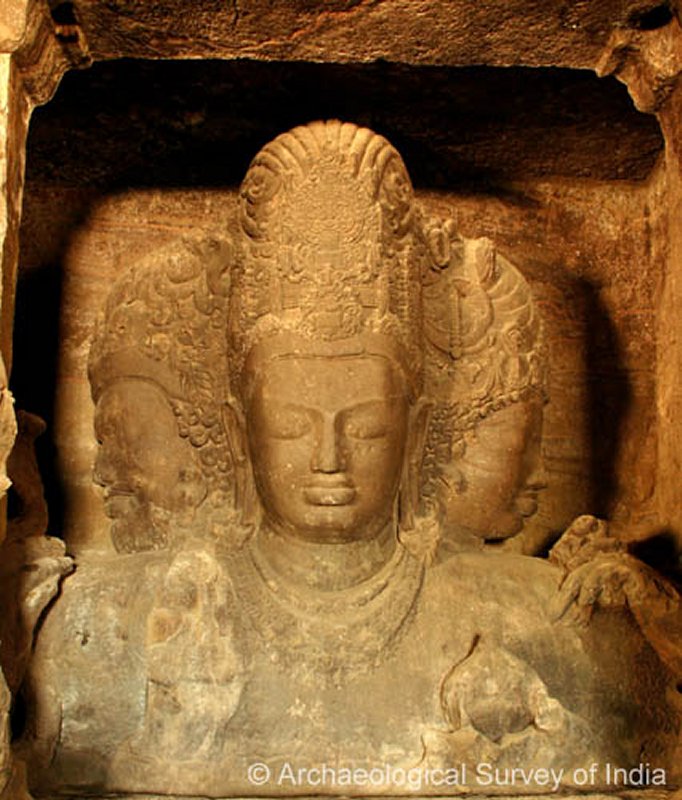
Trimurti Sculpture - Elephanta Caves, India - The sculpture is 20 ft (6.1 m) high.; it is a colossal bust of the three forms of Shiva. Photo credits: ASI
The complex consists of two groups of caves—the first is a large group of five Hindu caves with rock-cut stone sculptures. The main cave is famous for its carvings depiciting the glorious Shiva, who is displayed in various forms and act ions. The cave consists of a square plan mandapa whose sides measure about 27 m.
The second (to the east) is a smaller group of two Buddhist caves with one of which is unfinished, and several cisterns.
The place - still worshipped by the locals - is dedicated to Lord Shiva.
The island, which covers an area of approximately 7 km, was initially called Gharapuri (literally "the city of caves"); later, the Portuguese renamed the island after they found a colossal stone elephant near their landing place.
Elephanta Island came under the dominion of at least half a dozen different powers that ruled this region from 400 BC to modern times.
Before the Hindu caves were excavated, the island was a Buddhist center. The remains of the Buddhist stupas in Elephanta probably date to the early phase of Buddhism (about the 2nd century BC.)
 Elephanta Caves, India - The island of Elephanta, the glorious abode of Lord Shiva and an epitome of Hindu cave culture, consists of seven caves on an island in the Sea of Oman close to Mumbai which, with their decorated temples and the images from Hindu mythology, bear a unique testimony to a civilization that has disappeared. Here, Indian art has found one of its most perfect expressions, particularly in the huge high reliefs in the main cave. Image source - Ministry of Culturen - Government of India
Elephanta Caves, India - The island of Elephanta, the glorious abode of Lord Shiva and an epitome of Hindu cave culture, consists of seven caves on an island in the Sea of Oman close to Mumbai which, with their decorated temples and the images from Hindu mythology, bear a unique testimony to a civilization that has disappeared. Here, Indian art has found one of its most perfect expressions, particularly in the huge high reliefs in the main cave. Image source - Ministry of Culturen - Government of India
The Buddhists, the first to carve temples from mountains, were followed by the Hindus. Every Hindu temple primarily worships one Hindu god, and the Elephanta Caves were for worshipping Shiva.
The statues carved on the walls of the Elephanta Caves are giant (about 20 feet high). They were elaborate, centering on a scene in Shiva's life featuring Shiva, his wife, and other influential personalities.
The date of the famous Elephanta Caves is still very much debated and varies from the 6th century to the 8th century according to the experts. There are many theories regarding the beginnings of the Elephanta Caves. Most of them propose that they were built from 450 to 750 AD.
Interestingly, this period also marks the decline of Buddhism in India and the revival of the Brahmanical traditions (ancient Indian religious traditions that have their beginnings in the early Vedic religion) in the country.
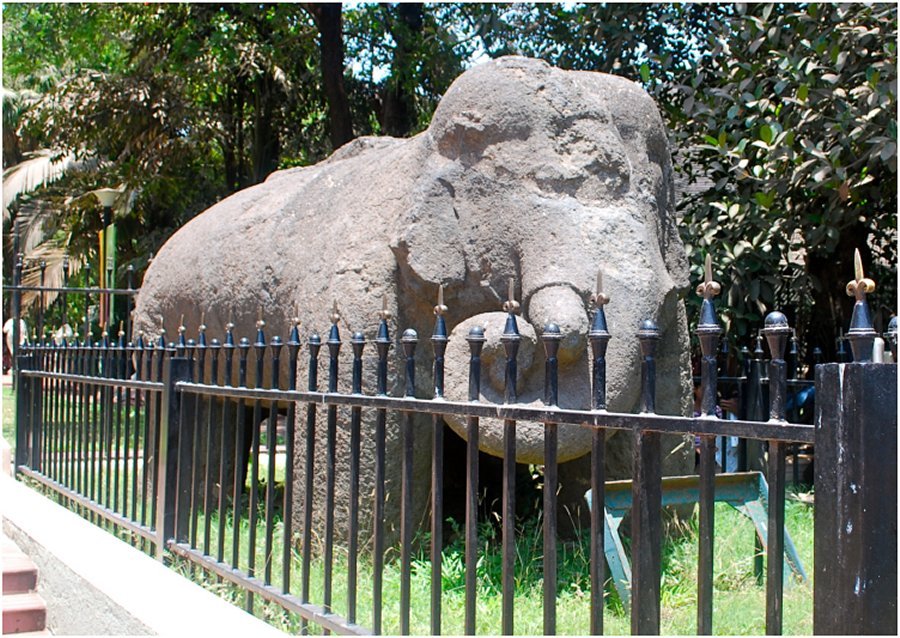
The Elephant statute from which Elephanta Island gets its name is now displayed in the Bhau Daji Lad Museum in Mumbai.
The most impressive of all the caves is Cave 1, which represents the evolved Brahmanical rock-cut architecture and displays several unique and lively sculptures.
The cave has a main entrance on the north with two other openings on the east and west, respectively, and a central hall with six rows (with six in each row) of pillared columns, six in each row except on the western corner, where a shrine contains a collection of rock art related to Shiva.
The temple dedicated to Lord Shiva is declared a UNESCO World Heritage Site.
Written by – A. Sutherland - AncientPages.com Senior Staff Writer
Updated on Oct 16, 2023
Copyright © AncientPages.com All rights reserved. This material may not be published, broadcast, rewritten or redistributed in whole or part without the express written permission of AncientPages.com
Expand for referencesMore From Ancient Pages
-
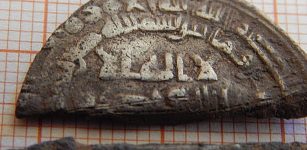 Treasure Trove Of Arabic Coins Dated Back 1,000 Years Unearthed In Graveyard In Poland
Archaeology | Jul 9, 2019
Treasure Trove Of Arabic Coins Dated Back 1,000 Years Unearthed In Graveyard In Poland
Archaeology | Jul 9, 2019 -
 Weapons Of Ancient Aztec Warriors Of Mesoamerica
Featured Stories | Mar 23, 2017
Weapons Of Ancient Aztec Warriors Of Mesoamerica
Featured Stories | Mar 23, 2017 -
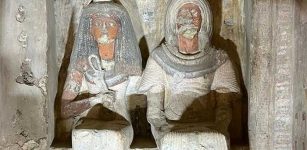 Look Inside The Amazing Egyptian Tomb Of Scribe Neferhotep In Luxor
Places | Feb 19, 2024
Look Inside The Amazing Egyptian Tomb Of Scribe Neferhotep In Luxor
Places | Feb 19, 2024 -
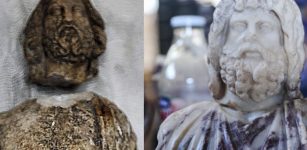 Statues Of Serapis Sky God And Asclepios God Of Medicine Unearthed In Ancient City Of Kibyra
Artifacts | Nov 26, 2020
Statues Of Serapis Sky God And Asclepios God Of Medicine Unearthed In Ancient City Of Kibyra
Artifacts | Nov 26, 2020 -
 3,000-Year-Old Settlement Of Lusatian Culture Unearthed On Outskirts Of Warsaw, Poland
Archaeology | Sep 14, 2020
3,000-Year-Old Settlement Of Lusatian Culture Unearthed On Outskirts Of Warsaw, Poland
Archaeology | Sep 14, 2020 -
 Surprising Discovery Reveals Ancient Tibetan Bowl Shows Alexander The Great – The Jewish Version And Not The Homer’s Iliad
Archaeology | Apr 28, 2022
Surprising Discovery Reveals Ancient Tibetan Bowl Shows Alexander The Great – The Jewish Version And Not The Homer’s Iliad
Archaeology | Apr 28, 2022 -
 3,000-year-old knight discovered at the Palidli necropolis
Civilizations | Aug 22, 2015
3,000-year-old knight discovered at the Palidli necropolis
Civilizations | Aug 22, 2015 -
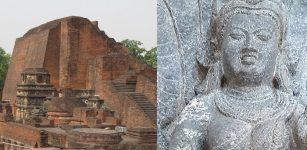 Unique 1,300-Year-Old Pala Period Idol Of Snake Goddess, Nag Devi Discovered Near Nalanda University, India
Archaeology | Apr 5, 2022
Unique 1,300-Year-Old Pala Period Idol Of Snake Goddess, Nag Devi Discovered Near Nalanda University, India
Archaeology | Apr 5, 2022 -
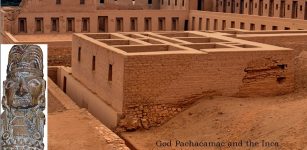 Pre-Columbian Pachacamac Site Dedicated To God Of Creation, Fire And Earthquakes In Inca Religion
Featured Stories | May 31, 2018
Pre-Columbian Pachacamac Site Dedicated To God Of Creation, Fire And Earthquakes In Inca Religion
Featured Stories | May 31, 2018 -
 Fall Equinox Explains Unusual Alignment Of Egypt’s Great Pyramids – Engineer Says
Archaeology | Feb 26, 2018
Fall Equinox Explains Unusual Alignment Of Egypt’s Great Pyramids – Engineer Says
Archaeology | Feb 26, 2018 -
 ‘Saimaluu-Tash’ Time Capsule: Largest Millennia-Old Collection Of Petroglyphs In Central Asia
Civilizations | Nov 20, 2018
‘Saimaluu-Tash’ Time Capsule: Largest Millennia-Old Collection Of Petroglyphs In Central Asia
Civilizations | Nov 20, 2018 -
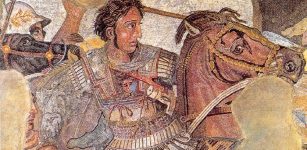 How Did Alexander The Great Die?
Featured Stories | Apr 9, 2016
How Did Alexander The Great Die?
Featured Stories | Apr 9, 2016 -
 Sunken 18th-Century British Warship HMS Tyger Found In The Dry Tortugas National Park, Florida
Archaeology | Mar 19, 2024
Sunken 18th-Century British Warship HMS Tyger Found In The Dry Tortugas National Park, Florida
Archaeology | Mar 19, 2024 -
 Strange Tale Of Demonic Possession And Exorcism In 17th-Century New France – What Happened?
Featured Stories | Oct 21, 2022
Strange Tale Of Demonic Possession And Exorcism In 17th-Century New France – What Happened?
Featured Stories | Oct 21, 2022 -
 On This Day In History: First Recorded Passage Of Halley’s Comet Observed By Chinese Astronomers – On Mar 30, 240 BC
News | Mar 30, 2016
On This Day In History: First Recorded Passage Of Halley’s Comet Observed By Chinese Astronomers – On Mar 30, 240 BC
News | Mar 30, 2016 -
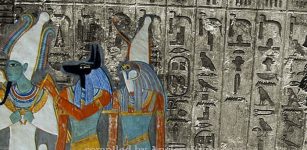 Pyramid Texts Of Ancient Egypt That Charted Journey Of Pharaohs Into Afterlife
Featured Stories | Feb 26, 2020
Pyramid Texts Of Ancient Egypt That Charted Journey Of Pharaohs Into Afterlife
Featured Stories | Feb 26, 2020 -
 Extraordinarily Well-Preserved 3,000-Year-Old Octagonal Sword Unearthed In Germany
Archaeology | Jun 15, 2023
Extraordinarily Well-Preserved 3,000-Year-Old Octagonal Sword Unearthed In Germany
Archaeology | Jun 15, 2023 -
 Rio Tinto Bosses Quit Over Destruction Of One Of The Earliest Aboriginal Sites
News | Sep 12, 2020
Rio Tinto Bosses Quit Over Destruction Of One Of The Earliest Aboriginal Sites
News | Sep 12, 2020 -
 “The Starving Of Saqqara Statue” And Its Undeciphered Inscription Could Pre-Date The Pyramids Of Egypt
Archaeology | Jun 2, 2014
“The Starving Of Saqqara Statue” And Its Undeciphered Inscription Could Pre-Date The Pyramids Of Egypt
Archaeology | Jun 2, 2014 -
 DNA Offers Insights Into The Use Of Plants By Humans In The Paleolithic Age
Archaeology | Oct 13, 2022
DNA Offers Insights Into The Use Of Plants By Humans In The Paleolithic Age
Archaeology | Oct 13, 2022
